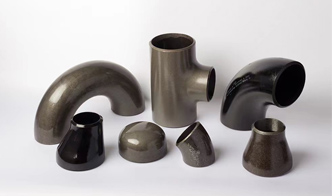Current location:
en1092 1 pn10
Date:2025-08-16 10:43:38 Read(143)

DIN flanges are fundamental in connecting various types of equipment to piping systems. These flanges provide a robust and standardized method for integrating essential components such as pumps, valves, heat exchangers, and pressure vessels into larger industrial systems. The reliability and efficiency of these connections are paramount for the smooth operation of any industrial setup. Facilitating Installation with DIN F langes One of the primary advantages of using DIN flanges in equipment connections is the ease of installation they offer. The standardized dimensions and design of DIN flanges mean that they can be easily aligned and bolted together, ensuring a tight and secure fit. This simplifies the process of installing new equipment, reducing the time and effort required. For instance, when integrating a new pump into a pipeline, the use of DIN flanges ensures that the connection is both reliable and efficient, minimizing the risk of leaks or misalignments that could disrupt operations. Streamlining Maintenance Procedures with DIN F langes Maintenance is a critical aspect of any industrial operation, and DIN flanges play a vital role in streamlining these procedures. The ability to quickly and easily disconnect equipment such as valves or heat exchangers for inspection or repair is a significant benefit. With DIN flanges , maintenance teams can unbolt the flanges, perform the necessary maintenance work, and then reassemble the components with minimal downtime. This modularity not only enhances the efficiency of maintenance tasks but also contributes to the overall reliability of the system, as equipment can be regularly inspected and maintained without extensive disruptions. Enhancing System Reliability with DIN F langes The use of DIN flanges in equipment connections also significantly enhances the overall reliability of the system. By providing a secure and standardized method of connecting critical components, DIN flanges help ensure that the system operates smoothly and efficiently. For example, pressure vessels must often withstand high pressures and temperatures, and the connection points are crucial for maintaining their integrity. DIN flanges provide the necessary strength and durability to handle these conditions, ensuring that the pressure vessels remain securely connected to the piping system. This reliability is vital in industries where even a small leak or failure can have serious consequences. DIN flanges are indispensable for connecting equipment to piping systems in various industrial applications. Their standardized design facilitates easy installation, reduces maintenance downtime, and enhances the overall reliability of the system. Whether integrating a new pump, maintaining a valve, or ensuring the secure connection of a pressure vessel, DIN flanges provide the necessary support and security. This makes them a preferred choice in industries where the seamless integration and reliable operation of equipment are crucial for success.
Share:
Previous: butweld elbow
Next: Designing a 6% Reduction Concentric Reducer for Efficient Fluid Flow Management
Kind tips:The above content and pictures are compiled from the Internet and are for reference only. I hope they will be helpful to you! If there is any infringement, please contact us to delete it!
You may also like
- Exploring the Benefits and Applications of 20 Percent Galvanized Pipe in Construction
- Flange Class 600 - High-Performance Flange Solutions
- Domestic Welded Fittings for Reliable Plumbing Solutions and Efficient Connections
- Durable 48% Galvanized Pipe for Various Construction and Repair Applications
- Exploring Properties and Applications of 40mm Metal Pipes in Various Industries
- Exploring ANSI Class 900 Standards for Industrial Piping and Valve Applications
- Equivalent 1% 2% X 18 Inches Galvanized Pipe Specifications and Uses
- Curved Stainless Steel Tubing for Precise Applications in Various Industries
- Exploring the Characteristics and Applications of X52M Pipe in Modern Industries